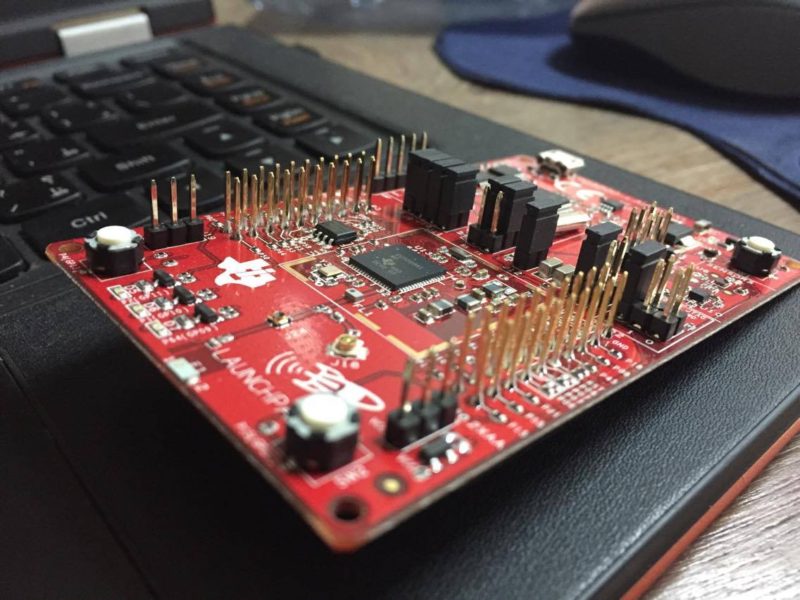India vows to be the third largest producer of electricity by producing around 1,200 billion units of electricity every year, yet this amount fails to serve around 400 million Indians among the total population of 1.3 billion. The main cause for this acute shortage is the wastage of the power for which the reasons are plenty, but that includes carelessness and busy schedule to be one of the main ones.
Of course, we do not switch off the air conditioner or lights when we move from a room to another for a short while, we love to keep our laptops and phones plugs on even after charging, we do not realise but all these small acts count to almost 25% of your total electricity used.
In the recent past, Internet of Things emerged as a saver for this power wastage issue by means of home automation systems. These intelligent devices automate your home by sensing your presence and understanding your requirements and acting accordingly. Taking this concept a step ahead, Electrosaver was designed.
The rescue hand
The main motto of Electrosaver, as the name suggests is to save electricity. This is done by installing an Electrosaver board behind the switches in the switch board, which automatically makes your existing electrical system smart. As easy as it  sounds, this happens without changing the infrastructure of the existing house. Once the hardware is installed the user can use Electrosaver app and have detailed access of their power consumption habits, which was never available to them before. When a user turns on the “ElectroSaver” mode, all the switches that have the product installed will turn off, except for the refrigerator. With this, the user wouldn’t have to think about the appliances that they thought were not turned off when they left the house, be it a hair dryer, water heater, mobile charger, TV, fan, bathroom light, etc.
sounds, this happens without changing the infrastructure of the existing house. Once the hardware is installed the user can use Electrosaver app and have detailed access of their power consumption habits, which was never available to them before. When a user turns on the “ElectroSaver” mode, all the switches that have the product installed will turn off, except for the refrigerator. With this, the user wouldn’t have to think about the appliances that they thought were not turned off when they left the house, be it a hair dryer, water heater, mobile charger, TV, fan, bathroom light, etc.
The process in the backend
The current and voltage are sensed by considering the phases and therefore the power consumed is obtained.The board is designed in such a way that it calculates the voltage drop and this measure can be integrated to obtain the power consumed per second, per hour and also the real-time power.
There are a couple of signal processing algorithms to understand the prevalent harmonics in the system. The communication is based on Hart topology and the IC used in the system is CC3200, which is used in transreceiver mode to configure the Wi-Fi in different modes as required to communicate data.
To allow encrypted data exchange, Advanced Encryption Standard (AES) engine is enabled and the key will be updated as coordinated by the server at intervals.The data received from these devices will help the users understand the power consumption of the house as well as the quality of power in the house. These features can be extended for automation and fault detection in the industrial applications.
How do the switches talk?
The board is placed behind the switchboard connecting the switches. Wi-Fi mesh network used here enables the intercommunication between the switches. All the switches are monitored and controlled by the main switch that is connected to the web server. These switches communicate with each other by sending signals to each other over the internet, thus making the whole network smarter.
In other words, it is the appliances that talk to each by means of the switches. Passing on the message occurs when a switch is not in range. For example, when switch one wants to communicate with switch three, but switch three is out of range, then switchone sends the message to the nearest switch to switch three and that switch communicates the message to switch three.
Multitasking chip
The multitasking of the CC3200 is managed by the FreeRTOS and the gateway to the system is given a Global System for Mobile communication (GSM) module as a backup. This GSM module allows connection to the internet in situations where the Wi-Fi password is reset or there is any issue with the Wi-Fi connection.
The designed board can be available in various dimensions, the basic one being 6X5cm and a height of 2 cm. This can operate 4 switches and there can be smaller or larger boards designed depending on the number of switches needed to be operated.
Ever-rising demand for power
“I stumbled upon this problem when I was completing my master’s thesis, I came across this report which said that the supply of power will never be able to catch up to the demand of power in India. This got me thinking, will we reach a point in time in the future when the supply of power will meet the demand?”, says Neelesh Jain, CTO ofElectrosaver.
So, ElectroSaver was designed to tackle the power problem by reducing the wastage in several urban cities in the hope that the electricity saved by the users can be redirected to smaller towns and villages that actually need electricity.
What makes Electrosaver attractive?
Electrosaver targets to have near zero harmonics contribution to the power distribution. The makers are also in process to create a framework for power sharing and statistical analysis that can help not just the user but also the power system operators to communicate and manage load better. They are trying to base the routing algorithm on WiFi stack and tweaking the routing protocols, which would enable dual purpose and secure exchange of data with the server as well as the user having a smartphone where solutions like Zigbee fail to communicate directly with the user. This will enable the system independent and directly manageable by the user in case server/gateway fails for any downtime.
Electrosaver immensely focuses on a social improvement by having grid level improvement which is economically beneficial to customers. The basic model of Electrosaver can be extended with the additional features like setting up a budget for electricity, detailed analytics. Apart from an app, Electrosaver can be manually controlled by IR remotes.
Expelling noise and interference
Eelctrosaver is designed in-house with the principle to make the solution truly low power. Trying to make the product low power brings in the issues of noise and interference which is prevalent in our surrounding, thereby making the mesh network sensitive to the environment. A lot of design considerations and algorithms are used by the Electrosaver team to remove this noise and interference and securing themesh network against the surrounding changes.
Cost and convenience
With a brighter vision of energy conservation, Electrosaver is a convenient home automation system with the capability to fetch the power consumption details. The makers continue to price it down to Rs.1000 or even lesser for a board controlling two switches. This sizably beats the other automation systems which range from Rs.6000 for automating two switches.“Our vision is to help reduce the wastage of electricity in a home and the cost of installing our product should not cost more than the amount that is being saved in that household. We want our end user to get an ROI at the end of the day”, says the Electrosaver team.
Indian power distribution and utilisation scenario are majorly lossy and most of the power factors go unregulated. Power distribution can be made more reliable with load shedding if the available power is utilised better and the opportunity to redirect power where it is more important with proper planning can be beneficial both environmentally and economically. Electrosaver with its power saveable features is definitely a contribution to the national grid, and with the continued evolution of more efficient technologies and improved wireless data transmission protocols, which the team is working on, there is hope that the saved power can be distributed to lighten the lives of people in dark.
Do you like this article, you may also like other innovation articles.
Ankita K.S. is audience development editor at EFY, and secretary of IEEE-YP. She is an engineering graduate, and also writes articles on technology for electronicsforu.com








